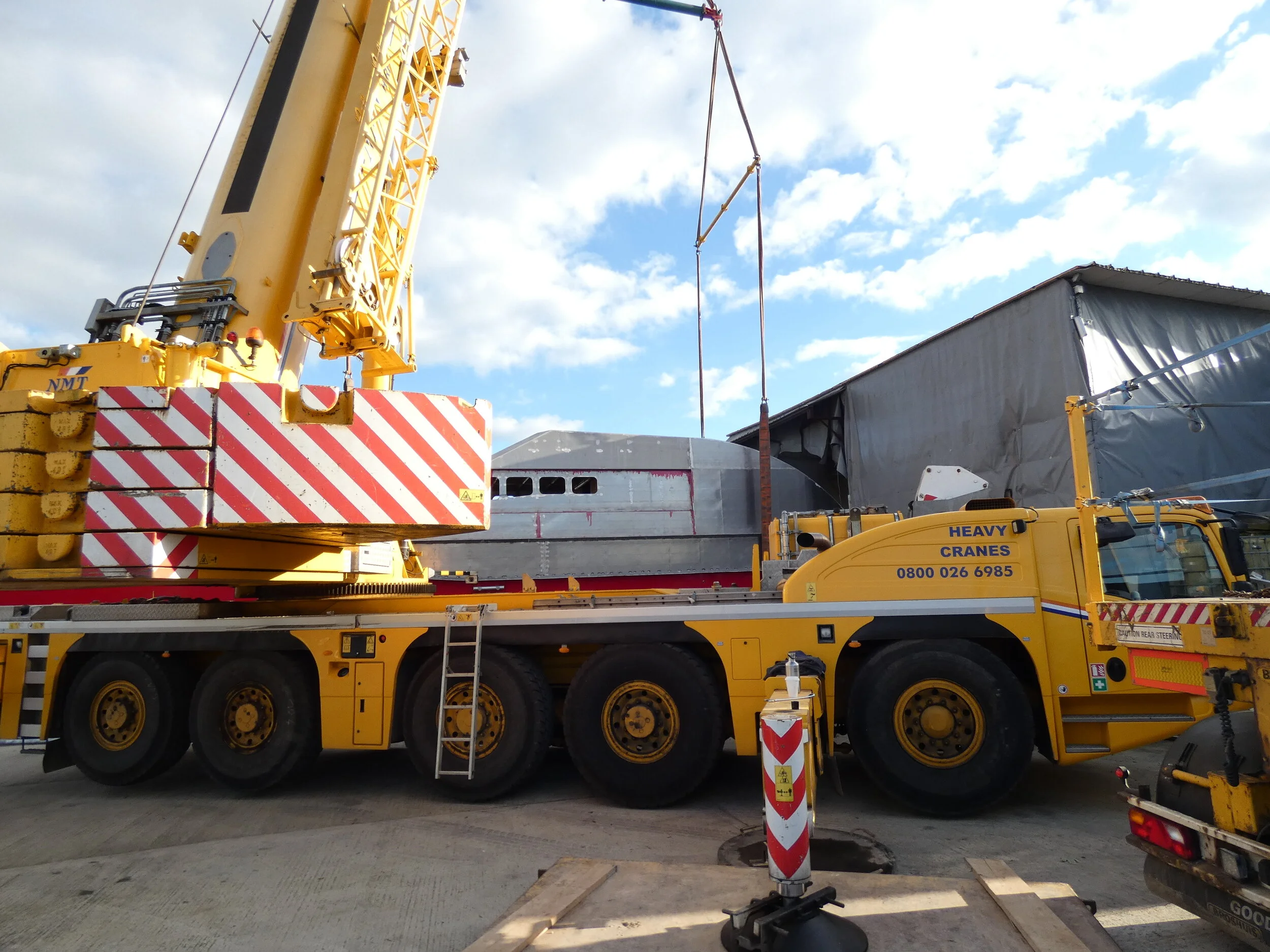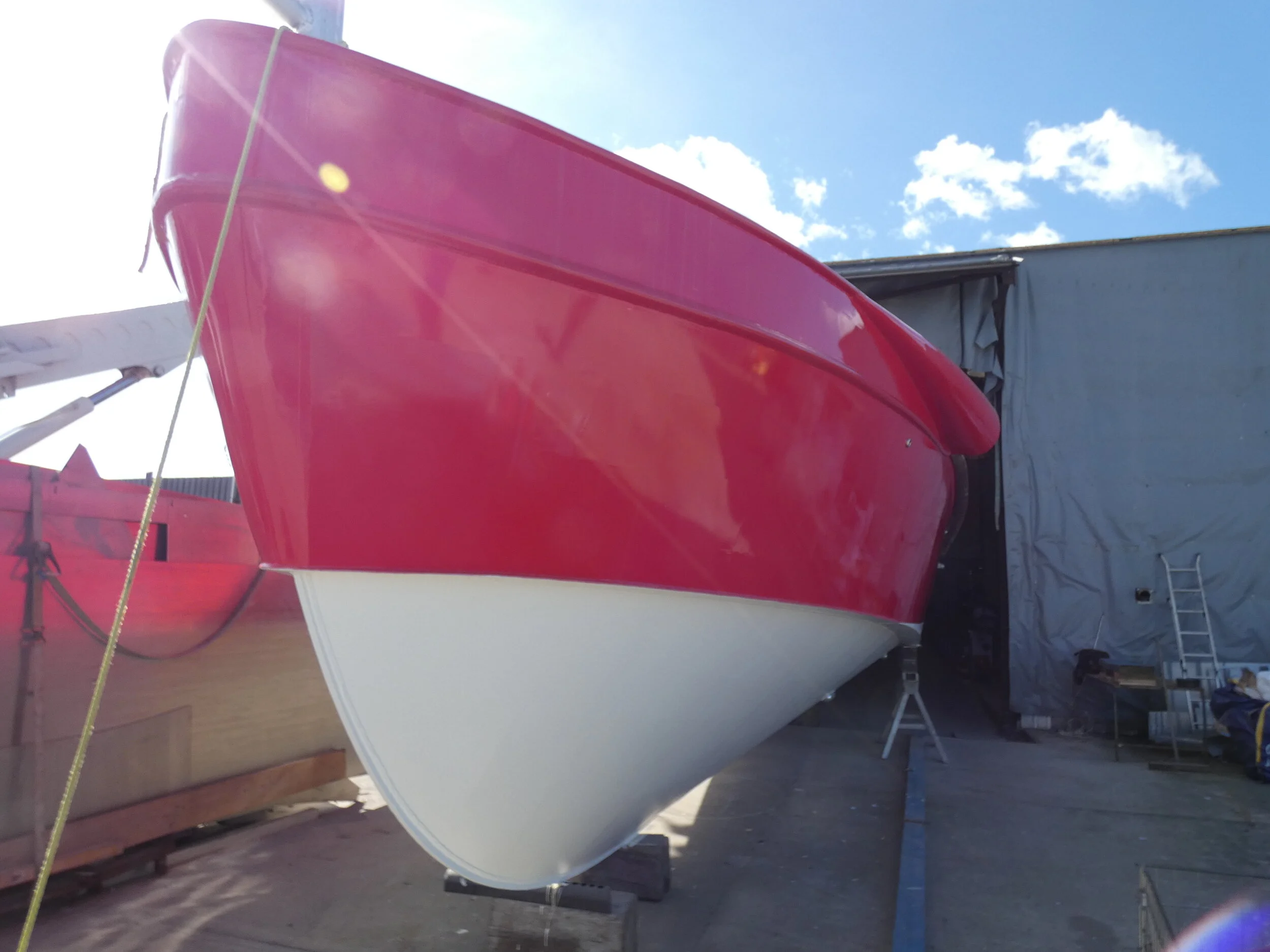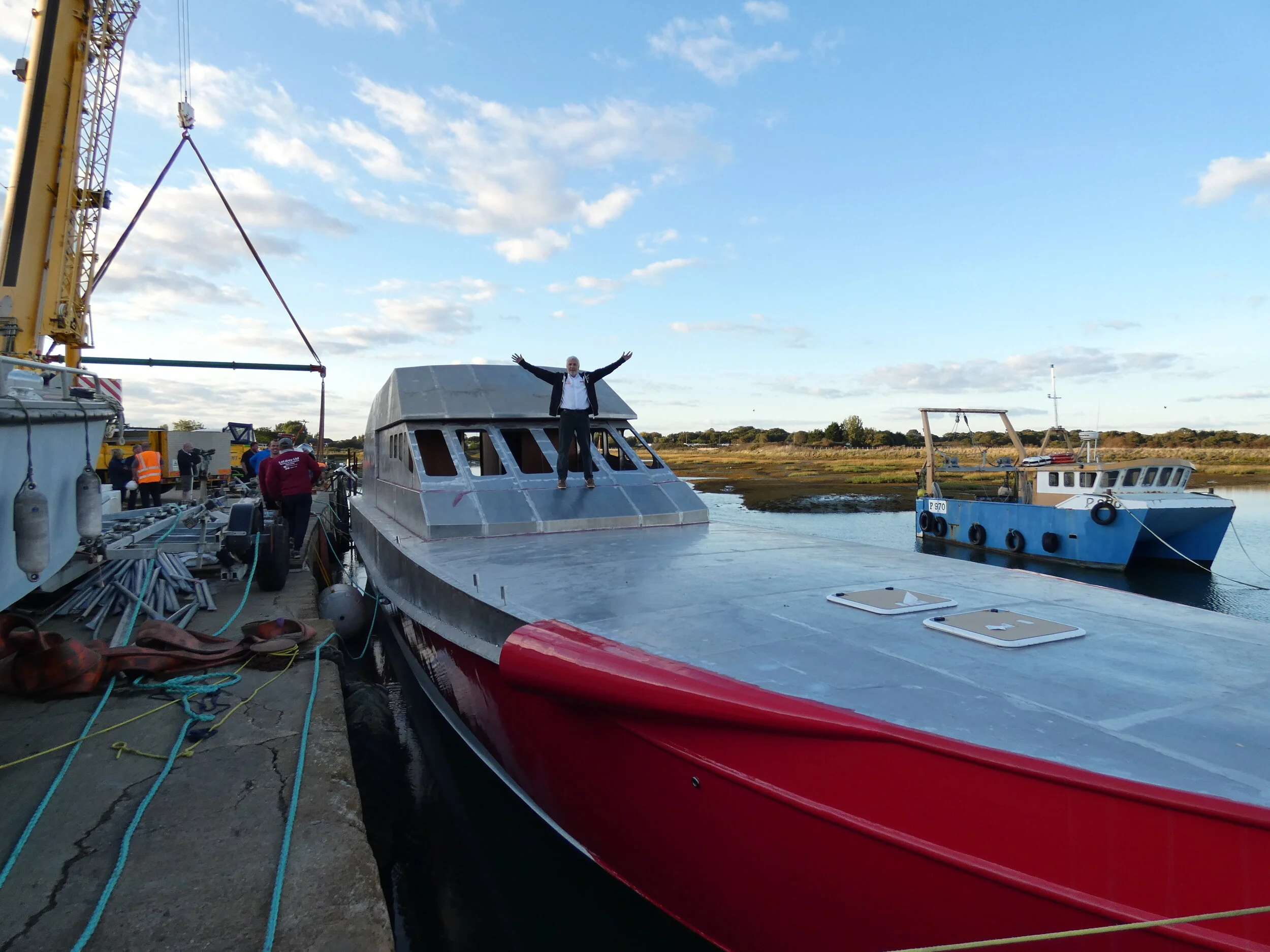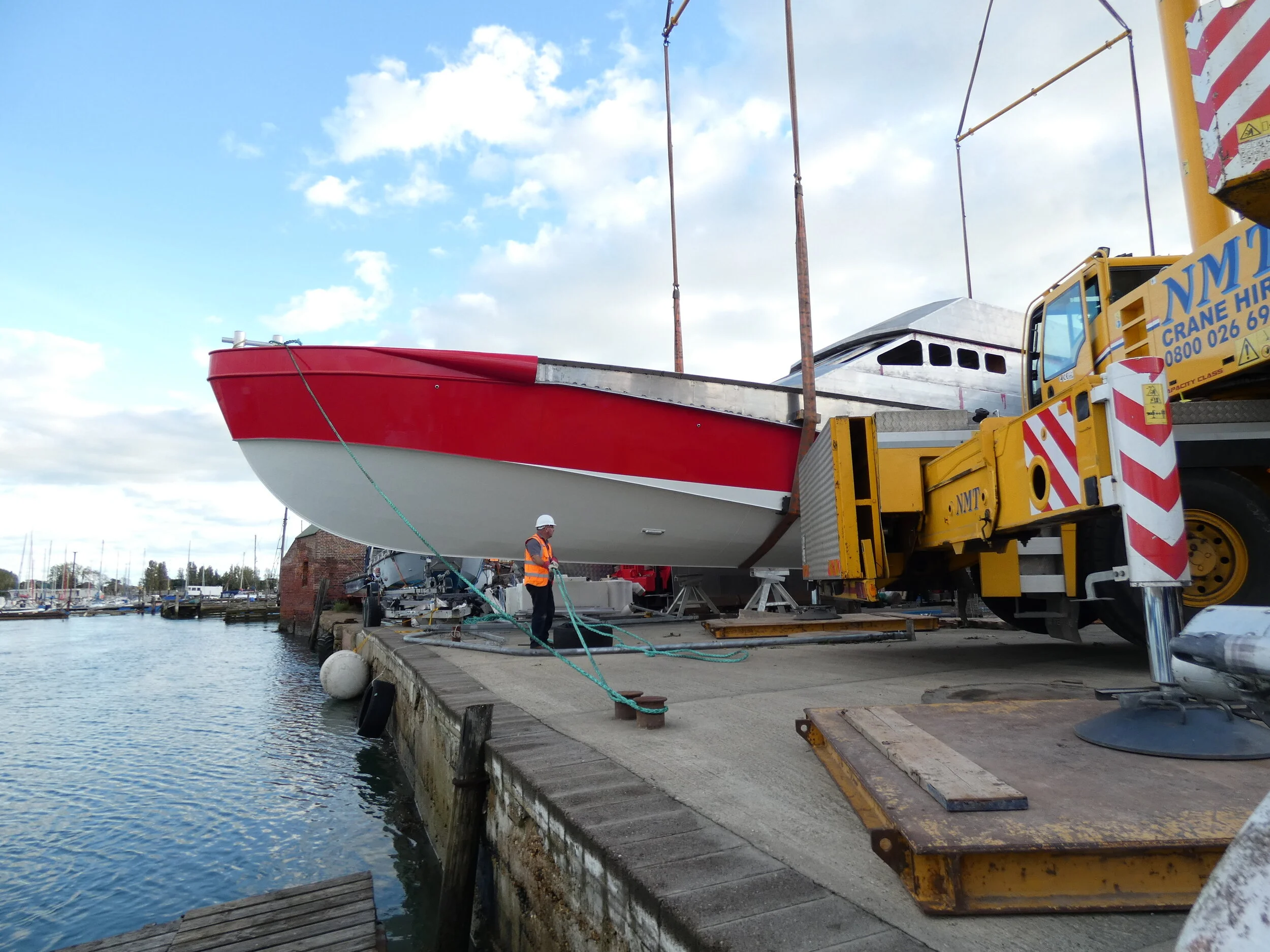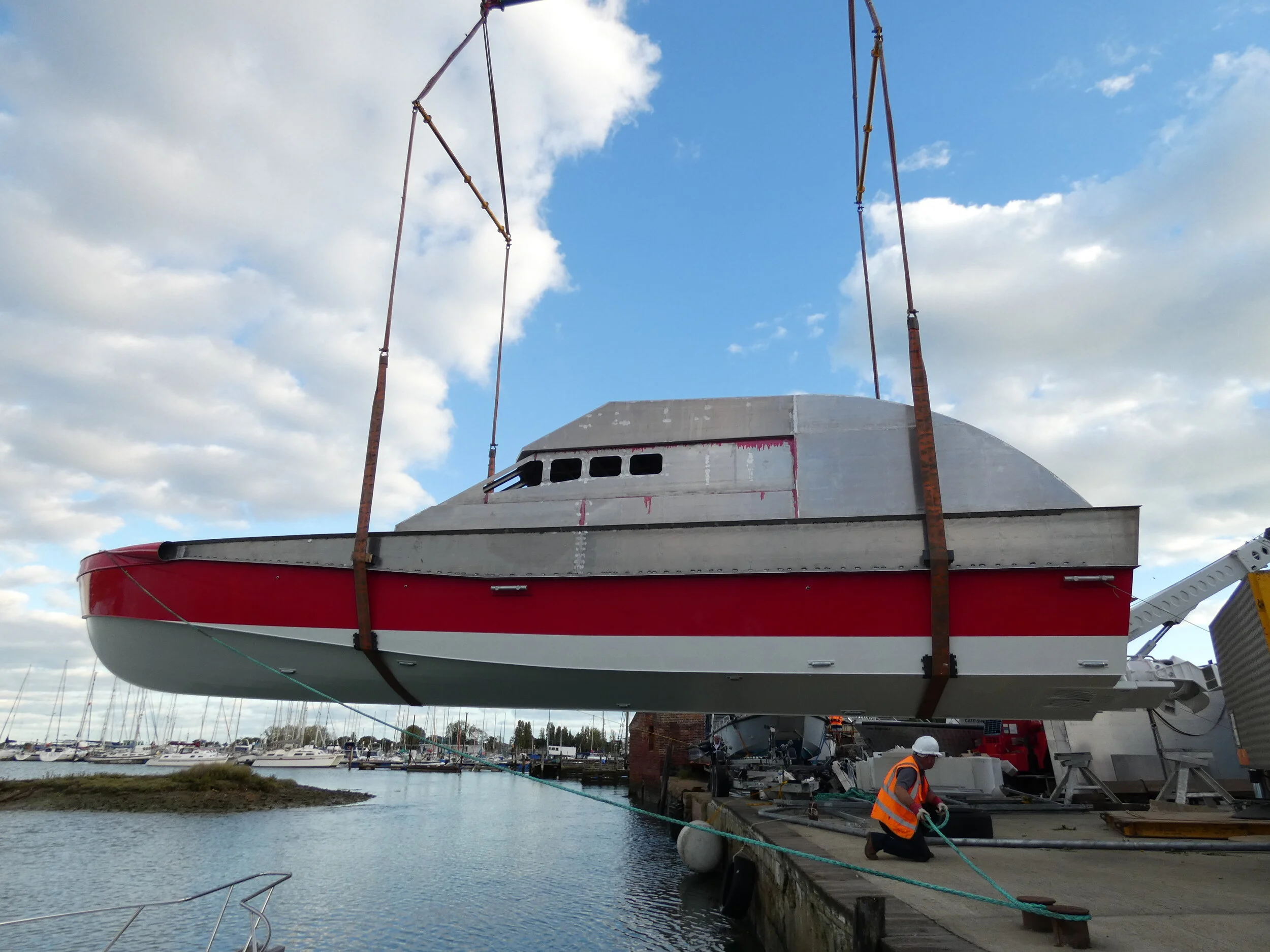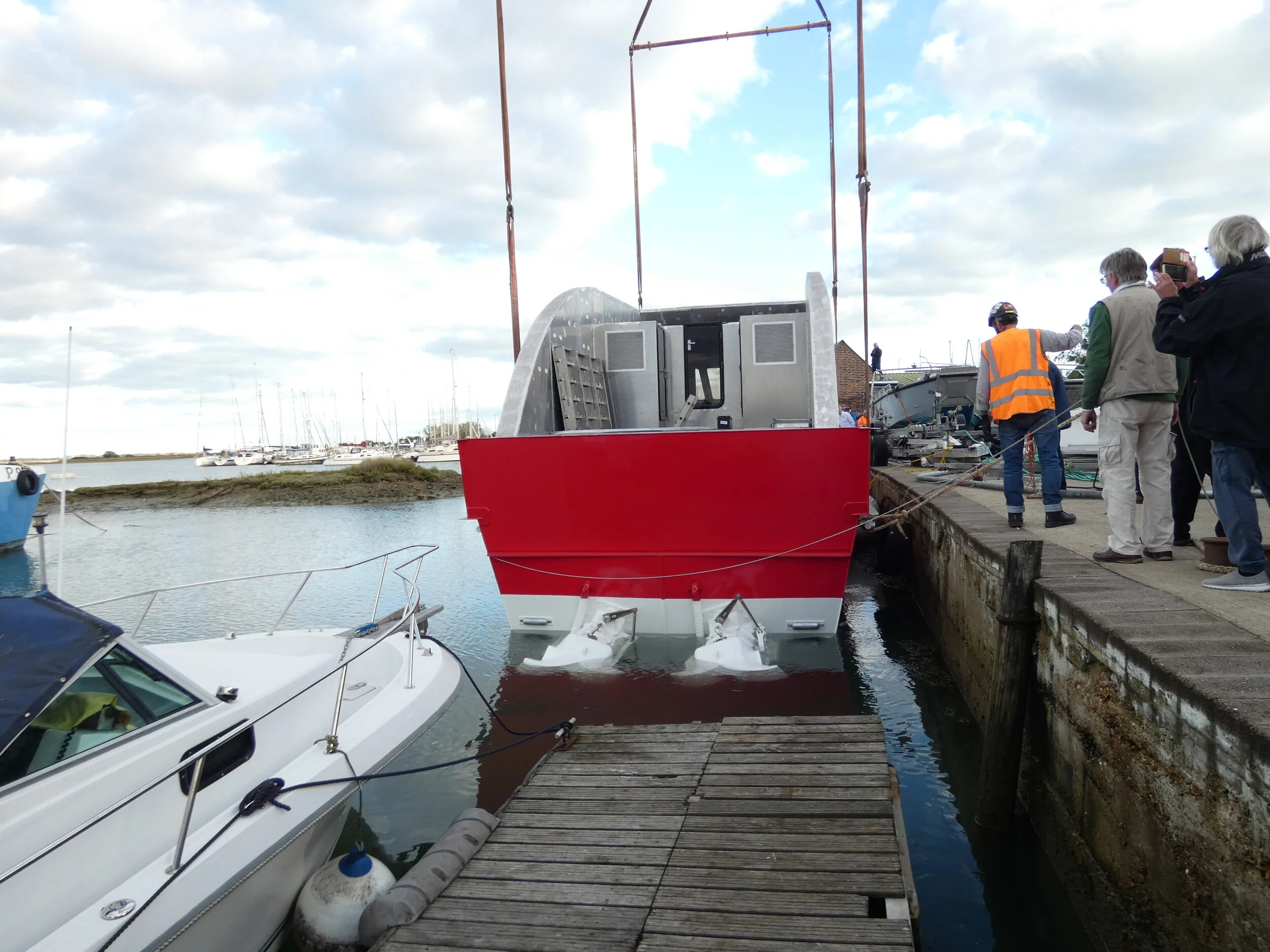Team Britannia’s round the world “superboat" hits the water for the first time
Team Britannia’s round the world superboat has hit the water for the first time, near Portsmouth.
The innovative 20-tonne vessel, called Excalibur, is made out of marine grade aluminium, to be both light and strong, was carefully lifted into the water, to coincide with a spring tide and maximum water at a boatyard on Hayling Island.
The painstaking operation started with the removal of a temporary building that was needed to accommodate the construction of the massive vessel, which started three and half years ago. The boat was then lifted, turned 90 degrees and lowered into the water.
Excalibur will be moved to the Hayling Yacht Company for the final fit-out, installation of massive inflatable tubes, commissioning of the engines and jets and to allow the superstructure and deck to be wrapped.
The construction process and today’s operation was overseen by ocean racing legend and Team Britannia’s skipper Dr Alan Priddy. “Last year the political commentator John Sergeant, on a visit to see Excalibur, asked me which would be finished first, our boat or Brexit – we now know the answer. The crew and our supporters have waited a long time for this day, but now the construction of the Excalibur is complete and everyone can finally see her in all her glory,” he said.
Alan continued: “I hope people will be as impressed as I am with the result and can see why the boat has taken so long to build. The attention to detail, quality of the welding and thousands of hours of skilled work that have gone into the construction, mean we have an immensely tough vessel, which incorporates a new fuel-efficient design that should cut diesel consumption by up to 30 per cent and demonstrate dozens of top marine products, including super-tough glass from Glasgow, batteries from Holland and navigation equipment from here in Portsmouth."
The boat is a completely new design from Professor Bob Cripps, former Technical Director of VT Halmatic. It has been designed in the UK and is being constructed out of marine-grade aluminium. Construction started in 2016 and was originally estimated to take just 12 months to build, but a series of delays and cost overruns meant construction on the hull along with snagging was not completed until this week.
In addition to the fuel-efficient design, the vessel will be powered by a revolutionary fuel emulsion, a mixture of diesel, water and an emulsifying agent from Portsmouth based Clean Fuel Ltd. The emulsified diesel appears to reduce harmful emissions such as particulate matter and nitrogen dioxide.
The emission from the emulsified fuel will be monitored by the University of Portsmouth for the duration of the voyage and the results published online. It is hoped that the marine industry will embrace this new technology as there is no need for expensive changes to engines as the mixing equipment and water tank can be retrofitted.
Team Britannia will launch their 42,000km record attempt from Europa Point in Gibraltar before travelling to Puerto Rico, through the Panama Canal, to Manzanillo, Hawaii, Guam, Singapore, Oman, through the Suez Canal to Malta before returning to Gibraltar. They hope to cut 10 days off the current record of 60 days, 23 hours and 49 minutes, currently held by Kiwi Pete Bethune in 2007.
Alan concluded: “This boat is the culmination of a lifetimes work for me, drawing on my 37 different world and national records and I want to thank the 1,200 investors who have backed this project along with our amazing partners such as the global shipping and logistics company GAC who have continued to stick with us. At times it as felt that we would never complete her and that I had bitten off too much, but the crew have been incredibly supportive, including the Vets who have brought that ‘can do’ spirit from our armed forces to the project.
“The next steps, attach the shafts, commission the engines and install the super tough glass. Once this has been done and the top of the boat is wrapped she will be ready for sea trials and the final selection of the crew. This leaves the last two pieces of the project, finding a title sponsor and media partner, without which we can’t start.
"Once this is in place we will leave in one of the two annual weather windows, smash the current world record and bring the title back to the UK.”
ENDS

